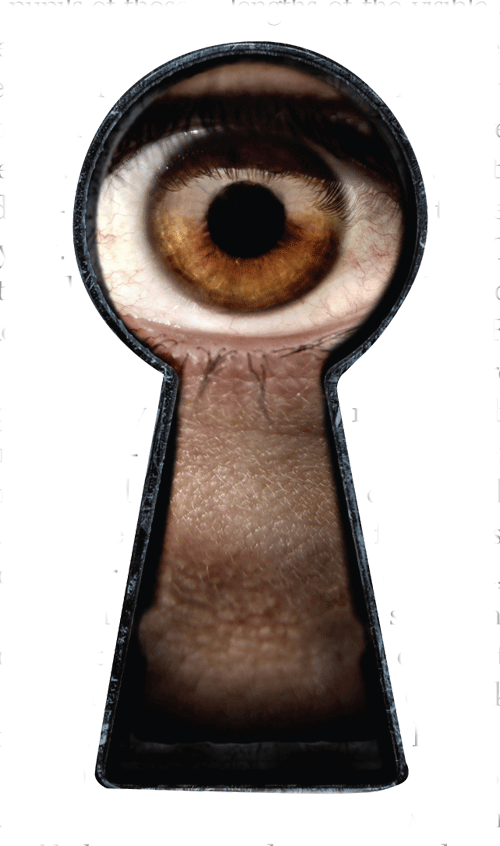There's much more to our eyes than what we see. How we interpret both what the eyes see and how the eyes look can tell us volumes. Reading facial expressions can have a profound physical impact on us, as well. Here are a few of the less-obvious but intriguing aspects of the human eye.
Facing Up
Doctors at the
Reading
Israeli security officers of the state-owned airline El Al have long employed the visual study of the face as a means of determining potential threats from passengers. Law enforcement officers have been taught to study the pupils of those they stop for violating the law. Large pupils suggest drug effects with substances such as cocaine, and small pupils reveal opiate use. The blink rate can also determine if a person is lying. When telling a lie, most tend to blink more rapidly and more often.
The study of facial expressions by another human, however, is subjective. To attempt to quantify facial expressions in a way that can be used by digital systems, computer scientists at
Color My World
The subconscious perception of color has a well-known effect on mood. Artists and designers use colors to evoke a particular emotion. Warm colors, reds and yellows, are just that: warm. They tend to bring us closer to a subject while cooler colors, blues and greens, tend to move us away. There is a physical reason for this. Red, the longer of the wavelengths of the visible spectrum of light, is bent the most by optical lenses, such as the lens of the eye. Blue, being of a shorter and more intense energy, is bent less. There is reasoning behind why McDonalds and KFC use an abundance of red in their restaurants and advertising.
The intensity of the same color can have a totally different response. Bright or dark red, as in a warning sign, can evoke irritability or anxiety, while light red can make us cheerful and happy. While olive green is drab, bright green, sky blue and yellow are the colors of spring, and are perceived as youthful and fresh. Remember that the next time you get dressed.
Secrets of the Iris
Can we tell something about a person's personality or well-being simply by looking? Could the pits and curves of their irises reveal disease or characteristics of behavior? There is a whole field of alternative medicine known as iridology that claims to do just that. Iridology, first developed by the 19th-century Hungarian physician Ignatz von Péczely, uses the iris to diagnose diseases. The basic assumption of iridology is that every organ in the body has a corresponding location on the iris. The study of the iris uses a clock face to assign different sections to different organs. By studying the iris, one can determine if that organ is diseased or healthy. For example, the kidney and adrenal glands are represented on the iris at about 5:30. If one observes discolorations, flecks or streaks in this area, then disease in those organs is suggested. Scientific studies of iridologists conducted under controlled situations have repeatedly failed to demonstrate the reliability of this technique. Nonetheless, the art of iridology survives.
Now there is some scientific evidence to support it. Aniridia is a human genetic disease that is associated with a small or absent iris. It has been determined that the aniridia gene (AN) called PAX6, an important master regulatory gene that is present in all animals and even in insects, governs both eye and brain development. The gene does its work in the embryo during formation of the eye; an abnormal expression of the gene can result in the bizarre abnormality characteristic of the disease. In governing brain development, the gene can determine personality traits. Studying the behavioral characteristics of groups of individuals and associating them with the pits and curves of their irises has demonstrated that the more lines an individual has curving around the outer part of their iris, the more neurotic and impulsive the person is likely to be. Those with more pits tend to be more warm-hearted and trusting.
We know that each iris is as unique to an individual as a fingerprint. In fact, even within the same person, no two irises are identical. Each iris has more than 200 useful points that can be used for comparison. This uniqueness can be exploited with iris scanning, a commonly employed technique used for identification purposes.
The idea for using iris anatomy for identification purposes was first proposed by an ophthalmologist, Frank Burch, in 1936. It was further refined in 1987 by two ophthalmologists, Aran Safir and Leonard Flom, who patented the idea. In 1989 Harvard professor John Daugman created the actual algorithms for iris recognition that are still in use today by all current iris recognition systems. The system works by using a digital video camera to capture the rings, furrows and freckles on a person's iris. It is fast (takes less than five seconds), accurate (the scanner cannot be fooled by an image of an iris as light is utilized to check for pupil dilation and movement) and relatively easy to accomplish. The resulting digitized image can then be stored for comparison and used for identification, not just verification. James Bond and "Star Trek" are alive and well.
Dr. Kershner is president of Eye Laser Consulting in











